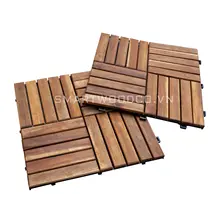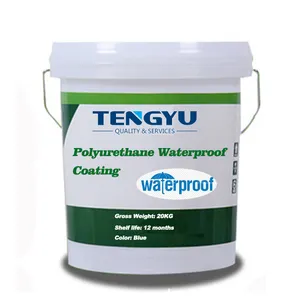A polyurethane roof coating is a specialized protective layer applied to roofs, renowned for its durability, flexibility, and waterproofing capabilities. This type of coating excels in sealing roofs against water ingress, offering an impermeable shield that protects from leaks and water damage. Polyurethane roof coatings enjoy widespread use across industrial, commercial, and residential properties, owing to their superior adherence to a variety of roofing materials.
Types of Polyurethane Roof Coatings
There are multiple varieties of polyurethane roof coatings, encompassing single-component and two-component systems. Single-component systems are straightforward to apply and set through exposure to atmospheric moisture, whereas two-component systems involve a resin and a catalyst that combine to trigger a curing chemical reaction. Certain coatings are tailored for high-traffic zones, providing extra resistance to abrasion, while others incorporate UV stabilizers to mitigate sunlight-induced degradation. The selection among these types hinges on the specific demands of the project and prevailing environmental factors.
Structure of Polyurethane Roof Coatings
The architecture of a polyurethane roof coating system typically comprises a primer layer, base coat, and topcoat. The primer ensures robust adhesion to the roof substrate, the base coat acts as the principal waterproofing and protective layer, and the topcoat contributes additional defense against UV radiation, weathering, and mechanical impacts. Some systems also integrate a fleece reinforcement layer within the base coat to bolster durability and resistance to punctures, particularly in locales susceptible to severe weather or frequent foot traffic.
Materials and Properties
The constituents of polyurethane roof coatings are selected for their tenacity and efficacy. The base polyol resin imparts flexibility and resistance to impacts, while the isocyanate component lends hardness and chemical resilience. These substances are often augmented with fire retardants, UV stabilizers, and pigments to satisfy specific safety regulations and aesthetic desires. The resultant coatings are not only sturdy and enduring but also versatile across diverse environmental scenarios.
Business Usages and Applications
Polyurethane roof coatings are essential in sectors where structural integrity and durability are critical. In the hospitality industry, they shield hotels from water-related harm, while in the industrial realm, they defend warehouses and factories against the elements. For residential structures, these coatings prolong roof lifespans, diminishing the frequency of repairs. The coatings' imperviousness to moisture and fire-resistant traits are especially prized in environments demanding strict compliance with safety and construction standards.
Functions of Polyurethane Roof Coatings
The primary role of a polyurethane roof coating is to forge a seamless barricade that repels water, thereby averting leaks and water-induced deterioration. Moreover, these coatings contribute to thermal insulation, potentially leading to energy conservation. They also serve as a safeguard against chemical spills, ultraviolet rays, and physical wear and tear, thus extending the roof's operational lifespan and reducing the need for frequent maintenance.
Features of Polyurethane Roof Coatings
Polyurethane roof coatings are distinguished by their elastomeric qualities, enabling them to stretch and revert to their original form unscathed. This flexibility is particularly suited to roofs that experience expansion and contraction due to temperature fluctuations. Other attributes include their swift setting times, ease of application, and compatibility with a range of substrates, including uneven shapes and surfaces. These distinctive advantages set them apart from other roofing materials in the market.
Benefits of Polyurethane Roof Coatings
The advantages of employing a polyurethane roof coating are numerous. They offer an economical solution for refurbishing an existing roof without resorting to a full replacement. The coatings' water-repellent and insulative properties can translate into considerable energy savings, while their long-lasting nature reduces maintenance demands. For enterprises, this equates to minimized downtime and disruption, as well as sustained cost reductions.
How to Use Polyurethane Roof Coatings
Effective deployment of polyurethane roof coatings necessitates meticulous cleaning and preparation of the roof surface, the application of a primer if needed, followed by the base and topcoats in accordance with the manufacturer's guidelines. It is imperative to apply the coating on a dry day and to allocate ample time for curing before the roof is subjected to heavy use or adverse weather conditions.
How to Choose the Right Polyurethane Roof Coating
Selecting the appropriate polyurethane roof coating entails evaluating the roof's current state, the climatic conditions it faces, and the building's function. It is also vital to weigh the coating's tensile strength, elasticity, and UV resistance. Engaging with a professional can yield valuable insights into the optimal product for a given application.
How to Clean and Maintain Polyurethane Roof Coatings
Cleaning a polyurethane roof coating typically involves the use of water and a gentle detergent. Routine inspections are advised to identify any signs of damage or wear, with prompt repairs necessary to preserve the coating's integrity. Proper upkeep ensures the prolonged effectiveness of both the roof coating and the roof itself.
How to Install Polyurethane Roof Coatings
The installation of a polyurethane roof coating should be executed by skilled professionals. The procedure includes substrate preparation, primer application, followed by the base and topcoats. For optimal results, the coating should be applied uniformly and at the thickness recommended by the manufacturer.
Target Audience for Polyurethane Roof Coatings
The intended audience for polyurethane roof coatings comprises building proprietors, facility overseers, and roofing specialists seeking a dependable roofing solution that delivers lasting protection. These coatings are particularly attractive to those who value durability, energy efficiency, and cost-effectiveness in their roofing selections.
How does polyurethane roof coating enhance building safety?
Polyurethane roof coatings bolster building safety by adding a fire-retardant layer that can aid in halting the spread of flames in the event of a fire. Moreover, their water-resistant and mould-resistant properties inhibit water penetration and the proliferation of detrimental mould, which can undermine a building's structural soundness and pose health hazards to occupants.
What are the considerations for choosing the right polyurethane roof coating?
Choosing the ideal polyurethane roof coating involves contemplation of the roof's substrate, the environmental conditions it will encounter, and specific performance criteria such as resistance to UV light or elasticity. It's also crucial to opt for a coating that aligns with the building's aesthetic design and sustainability objectives. Professional consultation can assist in pinpointing the most suitable product for a particular project.
How to ensure the optimal application of polyurethane roof coating?
To guarantee the best application of a polyurethane roof coating, proper roof surface preparation is essential, which may encompass cleaning, repair, and priming. Adhering to the manufacturer's application instructions, including the correct technique and conditions, is also key to securing the desired outcome. Periodic inspections after application can facilitate early detection and rectification of any issues, maintaining the coating's efficacy.











































 浙公网安备 33010002000092号
浙公网安备 33010002000092号 浙B2-20120091-4
浙B2-20120091-4